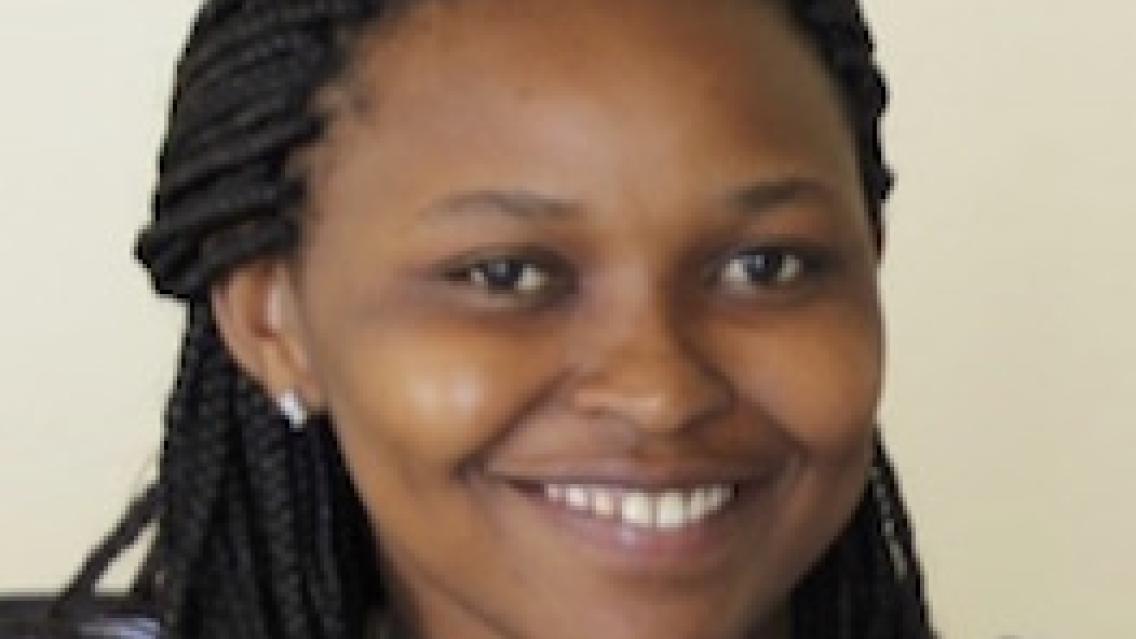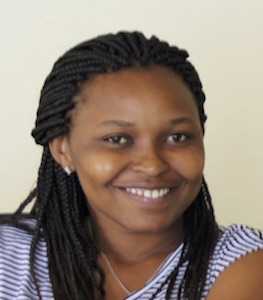Water and Disasters Thematic Lead Interview -- Faith Mitheu

For more information about this SERVIR service area campaign, click here.
Name/Title
Faith Mitheu, Water and Disasters Lead
 |
What is your educational background?
I have a BSc. degree in Agricultural Engineering, and a Master’s degree in Water Resources Management (major in Hydrology).
What do you do in your current position? What are you working on now?
I lead activities under the Water and Disasters service area. Currently, we have two main services, i.e. regional stream flow monitoring and water quality monitoring. In the first service, we are developing tools for monitoring stream flow at specific points to inform on quantities applicable for decision making, while on the second service we are applying Earth observation data and tools to map the common water quality parameters with major focus on inland lakes.
What are the biggest water/disaster challenges in Eastern and Southern Africa? How can GIS and remote sensing technologies help address these problems?
The biggest challenges are floods, water pollution, and drought. These challenges are also exacerbated by the paucity of in situ data and limited capacity (skills) to address them. GIS/RS and Earth observation technologies can help bridge the gap by providing state-of-the-art capabilities of developing tools and products applicable for decision making and consequently building the capacity of the institutions to make use of such products.
What specific tools and technologies are you using to solve these problems?
To address the above challenges, we have developed tools including hydrological models that make use of the freely available earth observation data to complement these in situ data. We are also making use of tools like Google Earth Engine (GEE) to develop flood maps and also to monitor water quality in the inland lakes.
What do you find unique about your work with SERVIR?
Within SERVIR, one of the unique things is the use of Earth observation (EO) data to address environmental challenges. This is specifically key when working in regions that have scarce in situ data to clearly inform certain needed decisions.
How will SERVIR and the wider GIS community benefit from the new services and applications you are developing?
The services developed allow for replication of methodologies. This means that in cases where similar problems are identified in other regions, it would be easy to borrow the already developed tools and that consequently saves on resources.
What are some of the main achievements of your work so far in this thematic area?
Though we are still in the implementation phase, we have made substantial strides where our work has resulted in collaborations with projects like Kenya Water Security and Climate Resilience (KWSCRP) by the Water Resources Authority (WRA), where we assisted in development of flood risk maps for Nzoia Basin; the Kenya Integrated Water, Sanitation and Hygiene (KIWASH), where we were tasked with development of runoff projections for 9 counties; and the latest which is a request from Deltares to make use of our tools (CREST/EF5, GIS flood tool and DEM) for their analysis in the project on ‘Climate Change Risk Assessment for Projects in Kenya and Nepal’, in support of WRA.
Is there anything else you would like to share with our readers?
While dealing with the different stakeholders, it is important to understand their needs and capabilities especially if the service is very technical. This way, it will be easy to bridge the gap between science and policy by developing sound products that can be easily used for decision making.
This interview was conducted by Dorah Nesoba at SERVIR-Eastern and Southern Africa. It has been lightly edited for style and length by SERVIR Global.

